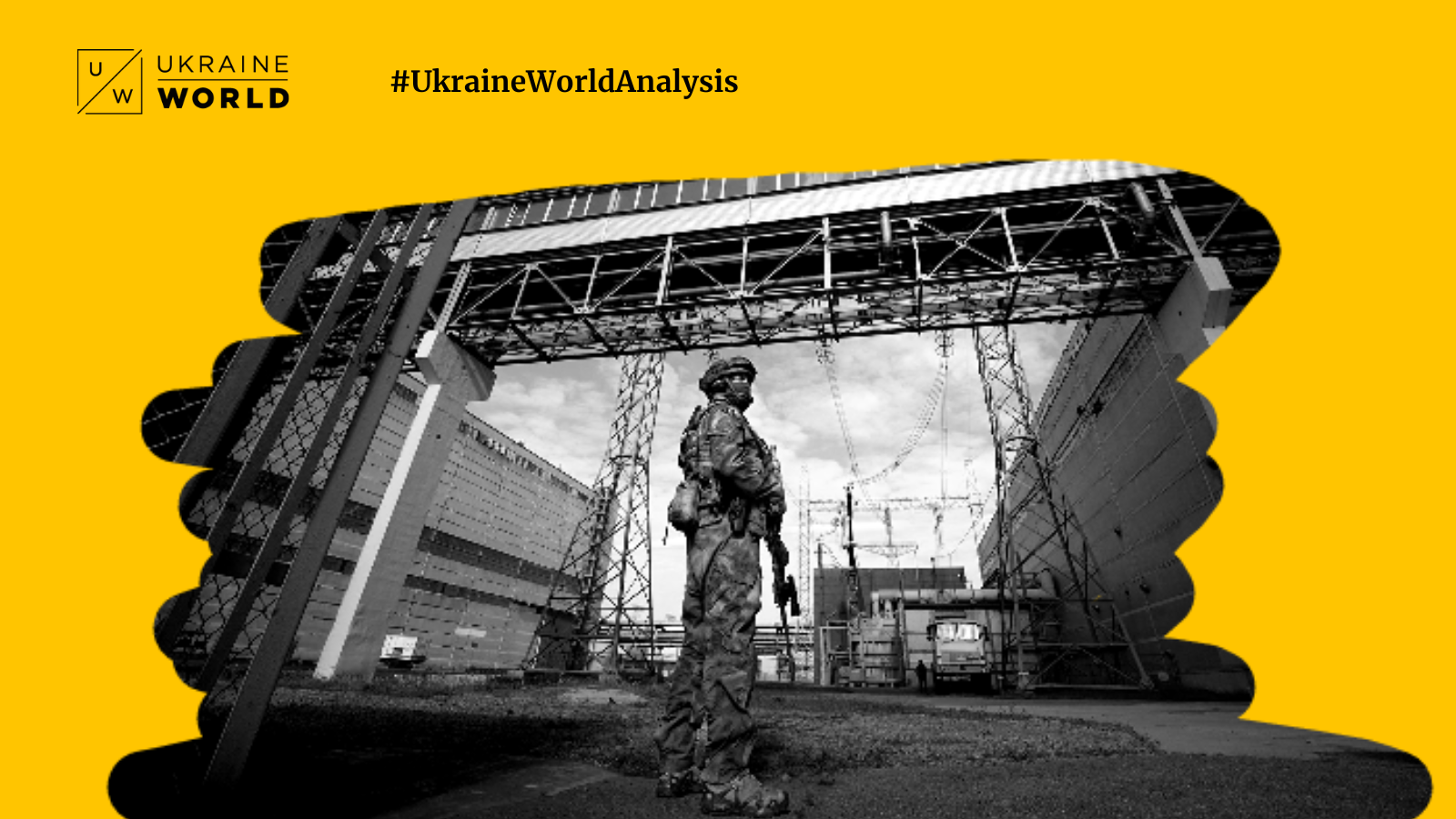What is going on at the Russian-controlled Zaporizhzhia NPP, what dangers does it entail?
UkraineWorld asked Valeriia Hesse, a non-resident fellow at Odesa Center for Nonproliferation and a Management and Research Consultant at Atomic Reporters. Key points - in our brief, #UkraineWorldAnalysis
1. On current and possible actions Russia can take at the Zaporizhzhia NPP and their consequences
- Russia has put nuclear security and safety at the Zaporizhzhia NPP in danger by militarizing the plant's territory and is responsible for all the associated risks.
- The occupying forces have placed heavy weapons next to critical machines at the NPP. Ammunition is located close to the equipment that ensures the operation of the turbogenerator, including the main tank with flammable oil that cools the steam turbine and explosive hydrogen that cools the generator.
- Shelling of the NPP by Russian military forces continues. Put together, these factors create an imminent threat. It is impossible to know when and where the situation could become critical.
According to Energoatom, in the event of a disaster at the Zaporizhzhia NPP, the area of potential contamination could reach 2 mln km2, while the possible exclusion zone could be up to 30 000 km2.
- Experts at the State Agency of Ukraine on Exclusion Zone Management compared this scenario to the Chornobyl accident. There were 2200 fuel assemblies at the fourth reactor, and the consequences of the blast were devastating. The Zaporizhzhia NPP has 6 reactors and spent fuel storage, together containing up to 18 000 fuel assemblies. At the same time, it is implausible that all of the fuel assemblies would trigger a Chornobyl scenario due to the difference in physical processes involved.
- However, the more realistic scenarios are that Russian forces may damage a turbine island of the operational steam generation unit or backup generators. If this happens, the resulting disaster could be similar to the Fukushima situation, in which radioactive products were released more gradually, and a certain amount of radioactive materials were confined in the containment structures.
- The Zaporizhzhia reactors have these containment structures.
- There is also a risk that Russian attacks could damage the reactor containment. At the same time, preliminary estimates show that in order to destroy it, the reactor containment would have to be hit directly by multiple artillery hits. The containment structure is capable of withstanding a strike by a falling airplane (20 tonnes). However, in case of shelling, the kinetic energy would come from the explosive power of the matter used. Even with the built-in margin of safety, there is no guarantee that the containment will remain intact. On top of that, it is not specifically designed to withstand a targeted missile hit.
- Russia, by creating this whole situation, has taken the whole world hostage and made everyone try to assess how dangerous matters could get if something happens, and what type of radiation release we would be facing. It is totally against international law.
- Some radiation monitoring equipment at the power plant has been damaged by shelling, which violates radiation safety regulations. It complicates the assessment of whether radiation levels are under control or not.
2. Why these actions constitute nuclear terrorism?
- These actions qualify as nuclear terrorism if they in any way damage or threaten to damage a nuclear facility in a manner which releases or risks the release of radioactive material with the intent to cause death or serious injury, to cause substantial damage to property or to the environment, or to compel a natural or legal person, or a State to do or refrain from doing an act. That is what Russia is doing.
- The key characteristic of terrorist activities is imposing psychological effects to compel an actor to follow a desired behavior. Russia aims to intimidate Ukraine to give in and is influencing other international players by sparking fears of radiation danger, since radiation knows no borders. If radiation is released, particles are dispersed wherever the wind takes them.
Russia is taking actions which threaten lives and security of the Zaporizhzhia NPP's personnel, which also constitutes nuclear terrorism.
3. On international legal mechanisms that can help to prevent a disaster
- The legal mechanism to use is to bring the issue to the UN Security Council, which is already taking place. The fact that Russia holds a veto on the Council is a huge stumbling block there.
- An IAEA mission to ensure the implementation of safety, security, and safeguards measures is absolutely necessary. The Security Council should also make a decision on establishing a demilitarized zone in the areas surrounding the plant so that the IAEA is able to travel to the facility and conduct all necessary inspections.
- The UN has confirmed that it has the logistics and security capacity to support such an IAEA mission.
4. On the dangers of dealing with Russia in the sphere of nuclear power
- Rosatom is constructing 34 nuclear power units in 11 countries.
- Russia's development of nuclear power in other countries, like Turkey, for example, means that it will not only know everything about the construction of the power plant, but also have Russian personnel among the plant's operators. It gives the RF potential leverage to blackmail any state with a similar arrangement.
ANASTASIIA HERASYMCHUK, ANALYST AND JOURNALIST AT UKRAINEWORLD
Valeriia Hesse, Management and Research Consultant at Atomic Reporters
This material was prepared with financial support from the International Renaissance Foundation.

